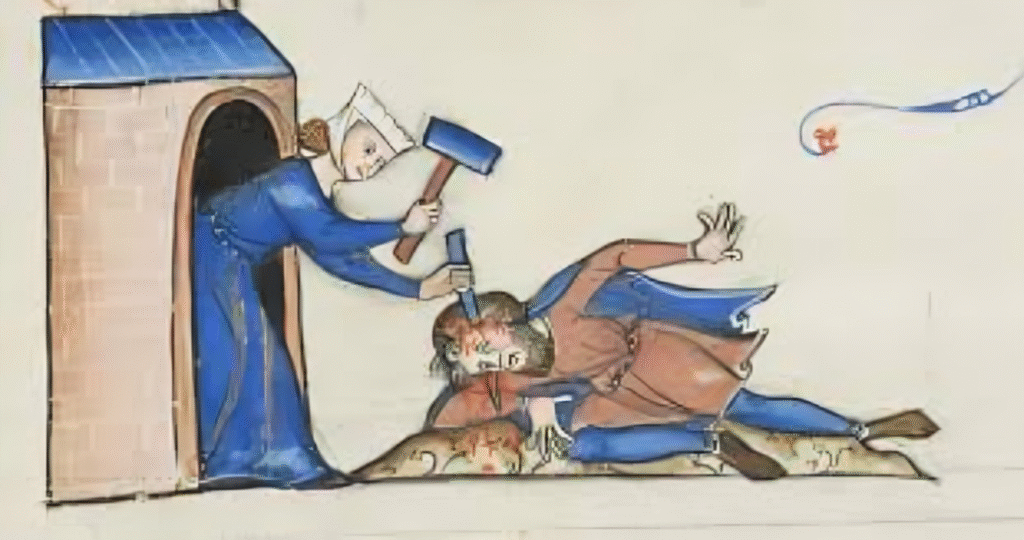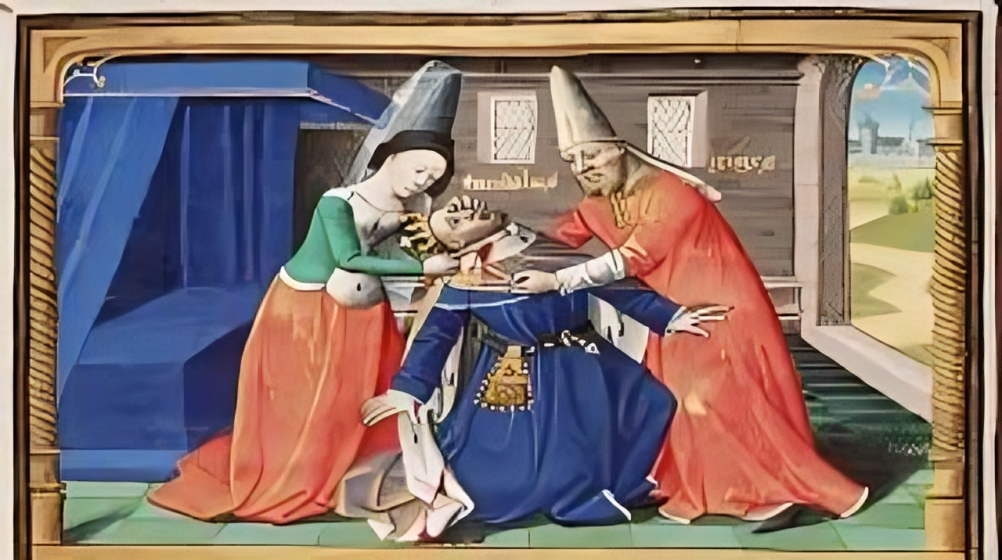In a groundbreaking revelation, researchers have reopened a nearly 700-year-old murder case from medieval London, unearthing shocking details of betrayal, revenge, and public violence. The case revolves around the murder of a priest named John Forde in 1337, with connections to scandalous affairs, political intrigue, and violent crime in 14th-century England.
The Murder of Priest John Forde: A Case of Betrayal and Revenge
In the turbulent streets of medieval London, violence was not uncommon. Murder rates in cities like Oxford were shockingly high—estimated at 60–75 murders per 100,000 people, almost 50 times higher than what we see today. Universities were often battlegrounds, with students clashing with swords and taverns turning into bloodbaths.
One of the most sensational murder cases of that era was the brutal killing of John Forde, a priest who was stabbed to death near a church. Modern researchers believe the murder was orchestrated by Ela Fitzpayne, a powerful and scandalous noblewoman of that time.
Ela Fitzpayne: A Powerful Woman at the Center of Scandal
Ela Fitzpayne, known for her controversial relationships and bold behavior, was once involved with John Forde himself. New research suggests that the two were former lovers. But the relationship took a dark turn after Forde betrayed her, reportedly testifying against her involvement in crimes that could damage her reputation permanently.

Ela Fitzpayne’s reputation was already under scrutiny. The Archbishop of Canterbury publicly accused her of serial adultery with various men, including knights, married men, and even members of the clergy. She was punished by the Church with a harsh form of humiliation known as the “Walk of Shame.” Every autumn for seven years, Ela was forced to walk barefoot through Salisbury Cathedral, carrying a heavy candle. Additionally, she was required to make large donations to the poor and was forbidden from wearing gold or precious gems.
While Ela may have endured the other penalties, historians believe this public humiliation triggered a desire for revenge. And that revenge likely came in the form of John Forde’s brutal murder.
Medieval Murder Maps Project: Rewriting History
These stunning findings are part of the Medieval Murder Maps project by Cambridge University, led by Professor Manuel Eisner. The project focuses on translating ancient Latin records written by coroners, which recorded suspicious deaths after inquests by local juries.
In John Forde’s case, translated records reveal that Ela Fitzpayne convinced four men to carry out the murder: her brother, two household servants, and a chaplain. As the chaplain distracted Forde on the street, the others attacked. Forde’s throat was slit and he was stabbed repeatedly. Shockingly, only one of the attackers—a servant named Hugh Colne—was ever punished with imprisonment.
Links to Cattle Theft and French Conflicts
But the story gets even darker. Eisner discovered yet another surprising connection to John Forde in a 1322 royal report, almost a decade before his murder. This document described how John Forde, along with Sir Robert and Lady Fitzpayne, attacked a French Benedictine priory near their estate. The group smashed gates, damaged buildings, and stole livestock including sheep, pigs, and oxen, holding them for ransom.
This violent robbery was not just a petty crime but part of rising tensions between England and France in the build-up to the Hundred Years’ War. Eisner expressed shock at finding a priest actively involved in violent raids and theft.
The Power Play Behind Public Murders
What makes this case significant is how public killings were used as a display of power in medieval England. For Ela Fitzpayne, Forde’s murder may have been a public message to her enemies and detractors. In a world where political power, personal honor, and religious authority were often intertwined, such brutal actions served both personal vengeance and political statement.
Air India Flight Grounded in Kolkata: तकनीकी खराबी के शक में यात्री उतारे गए


[…] How a ‘Walk of Shame’ Led to Murder: Shocking Truth Behind 700-Year-Old Priest Killing […]